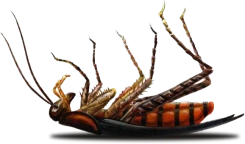Commonly Asked Tick Questions
May is a great month to get outside, but if you live in the Mid-Atlantic you may return from your walk in the woods with an unwelcome guest – the black legged tick, or deer tick. Here are some answers to commonly asked questions about deer ticks, or black legged ticks:
Where do ticks live?
Before you go outside, understand where ticks are likely to be found. Ticks live in wooded areas, in grassy areas and on brush. They also are found on animals such as pets and wildlife. Ticks live not only in the parks, hiking trails and preserves, but many people encounter ticks in their own backyard.
How can I avoid ticks?
An ounce of prevention is worth a pound of cure, so it’s a great idea to try to avoid ticks altogether. Ticks are at their most active during the warmers months so now is the time to get to work.
When you are outside:
- Avoid wooded and brushy areas, and keep to the center of trails if you’re on a hike.
- Use an EPA registered insect repellant as labeled.
- Have Home Paramount to treat your yard for ticks and mosquitoes.
When you come back inside:
- Take the time to check your body top to bottom for ticks. Likely areas include your scalp, around your ears, under your arms, around your waist, between your legs and at your joints.
- Launder your clothes after checking them. A high heat dryer for 10-15 minutes will kill ticks, and wash in hot water if you need to launder the clothes first.
- Check your pets for ticks, as well as any bags or gear that you were carrying. Ticks won’t attach to your dog’s leash, but they may stowaway on it and bite later.
- Shower within two hours of returning indoors. This has proven to be effective in reducing the risk of Lyme disease, washing off unattached ticks and giving you the opportunity to do a thorough tick check.
How should I remove a tick?
Ticks an be difficult to spot, but if you happen to find one it’s important to take the time to remove them right away to reduce the risk of contracting Lyme Disease. These tenacious arachnids use a barbed feeding tube to remain embedded in your skin. It is important to remove the tick’s body and its buried mouthparts from your skin to reduce the risk of disease and infection.
- Use a pair of fine-tipped tweezers to grasp the tick as close to the surface of the skin as possible. Pull upward with a steady, even pressure. This technique allows you to remove the tick and its feeding tube entirely, without leaving anything under the skin. Do NOT twist the tick or use heat, nail polish or petroleum jelly to get it to voluntarily detach.
- Once you’ve removed the tick, dispose of it by putting it in a vial of rubbing alcohol or a sealed bag or container. You can then send it for testing. If you’re not worried about having it tested, you can simply flush it down the toilet. Do NOT crush it with your fingers or vacuum it.
- Clean the bite area and your hands with soap and water or rubbing alcohol. Ticks are dangerous because of the bacteria they carry, so disinfecting after contact is a must. Do NOT assume that the tick is harmless, the number of Lyme disease cases in the United States is 329,000 a year and growing.
What should I do if I locate a tick on me?
Ticks spread germs and bacteria through their bites, and it can take minutes to days to transmit an infection. It is best to remove a tick before they bite you and if you have found them crawling, you have likely avoided their chance to spread disease. However, you should carefully check yourself for other ticks that may have escaped notice.
If you find a tick attached to you, remove it as soon as possible. After you have removed the tick, you should keep an eye out for symptoms of Lyme Disease for the next 30 days. Symptoms may include:
- Rash
- Fever
- Fatigue
- Headache
- Muscle pain
- Joint swelling and pain
Contact your health care professional with any questions or concerns that you might have about your exposure to ticks and their diseases.
How can I track tick activity in my area?
Download LivLyme’s free TickTracker app, which is available at the Google Play and Apple app stores. Created by 14-year-old Olivia Goodreau after she contracted Lyme Disease and experienced the difficulty of diagnosis, the App is designed to help combat tick-transmitted infections and diseases by using an algorithm to coordinate multiple tick-activity data sources into a user-friendly map view.


Why Choose Us?
Providing Reliable Pest & Wildlife Solutions Since 1939
At Home Paramount Pest Control, we have been dedicated to delivering reliable pest and wildlife management solutions for over 80 years. Our long-standing presence in the industry speaks volumes about our commitment to excellence and customer satisfaction. When you trust our team, you can always count on:
- Customized solutions to suit your specific needs
- Same-day service availability for pest infestation emergencies
- High-quality green products that are safe for the environment
- Complimentary pest inspections
- Affordable financing solutions tailored to your budget
Call us at 888-888-4663 to get started with a free pest inspection for your property today!
Learn More

